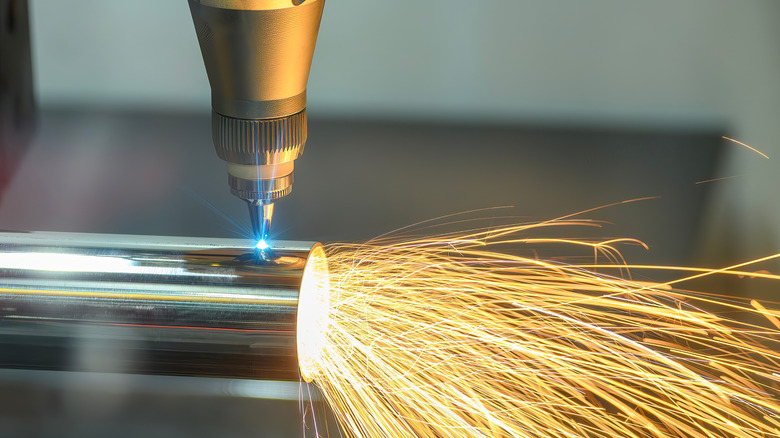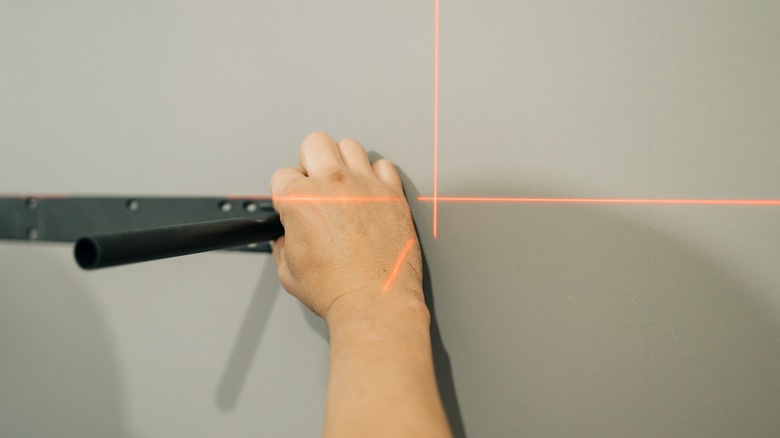What Does 'Laser' Stand For? A Look At The Tech's History & What The Acronym Originally Meant
Lasers have been around for centuries, and over the past few decades, humans have found numerous applications for them. For instance, the US Navy uses lasers to shoot drones out of the sky. You'll also see lasers in the grocery store as a barcode scanner, in the metal fabrication shop as a cutting machine, and in the operating room as a cancer treatment. Who knew a beam of light would be so helpful?
Looking back at its origins, the laser was originally an acronym that stands for Light Amplification by Stimulated Emission of Radiation. This gives you a glimpse of how a laser is formed — a laser medium (e.g., gas, crystal, or glass fiber) is energized with electricity or a light source to make the atoms in the medium produce radiation (a.k.a. light) and stimulate all the others to do so.
These days, laser is now its own word and generally refers to the device that emits the beam. Let's go back in time and see how this nifty technology came to be and evolved into the handy tool it is today.
How the laser came to be
The history of the laser can be traced back to the early 1700s when scientists like Isaac Newton, Thomas Young, James Clerk Maxwell, and Max Planck began uncovering the true nature of light over the centuries. However, the concept of laser light itself originated with Albert Einstein in 1917. Einstein theorized the process behind amplified stimulated radiation, a.k.a. the laser, but apparently, it was easier said than done.
It wasn't until after World War II that scientists began to make significant progress with laser implementation. One notable figure in the invention of the laser was physicist Charles Townes. During the war, he designed radar bombing systems for the military, but the Office of Naval Research wanted a more powerful radiation beam. In 1954, Townes and two colleagues from Columbia University, Herbert Zeiger and James P. Gordon, developed the MASER, a device that generates amplified stimulated emission in microwave form rather than light.
Townes continuously built on the principle behind the MASER until he had the idea of using even shorter waves like infrared and optical light. When he brought this up with his brother-in-law and fellow research physicist Arthur Schawlow from Bell Labs, Schawlow proposed using mirrors in a long cavity to stimulate the atoms. This then became the foundation of how modern laser devices are built.
While Townes and Schawlow had the know-how to build a laser, it wasn't they who developed the first working laser device. It was physicist Theodore Maiman from the Hughes Aircraft Company. Maiman used artificial rubies as the laser medium and light pulses as the energizer. With these materials, he was able to generate short bursts of laser light. It wasn't as continuous and concentrated as today's lasers, but it still achieved what Townes and Schawlow outlined in theory. Lasers are still being constantly developed today for various applications, including future laser technology that may help terraform Mars.

